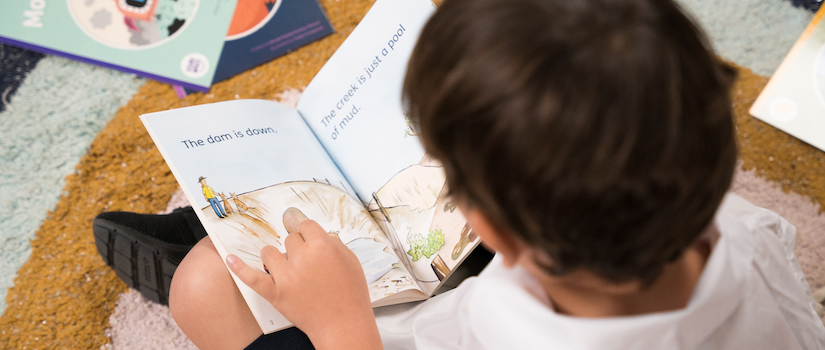Articles & Videos
How to use Sound Waves Decodable Readers
Categories
Subscribe to our newsletters
Receive teaching resources and tips, exclusive special offers, useful product information and more!
How to use Sound Waves Decodable Readers
Sound Waves Literacy 25/5/23

Whether you’re currently using Sound Waves Decodable Readers in your classroom or interested to learn more – there are a number of ways you can use the Decodable Readers with students.
It’s important to note the Sound Waves Decodable Readers follow a systematic synthetic phonics sequence and consolidate the explicit teaching of phoneme–grapheme relationships in corresponding Sound Waves Literacy lessons. We recommend using the Decodable Reader/s directly after your lesson.
Here are some instructional approaches for implementing the Decodable Readers:
Whole-class modelled reading
Whole-class modelled reading is a great way to teach focus phoneme–grapheme relationships and Special Words, and reinforce the learning from your Sound Waves Literacy lesson.
For effective whole-class modelled reading, project the relevant Decodable Reader from Sound Waves Literacy Online so you can model:
- identifying and decoding words with the focus phoneme–grapheme relationship and Special Words
- reading from top to bottom and left to right
- responding to full stops, exclamation marks and question marks
- pausing to think about the meaning of words.
While core books are ideal for whole-class teaching, you may like to start with support or extended books depending on the overall ability of your class.
Small-group reading
Small-group reading allows students to practise reading focus phoneme–grapheme relationships and Special Words. Students should be grouped according to their level (support, core or extended), and given their own copy of the relevant Decodable Reader, then:
- Together, read aloud the title of the book and discuss what the book might be about. Revise the focus phoneme–grapheme relationship and Special Words using the Warm Up on the inside front cover.
- Have students read the text aloud. Help students decode unfamiliar words. Discuss unfamiliar and interesting vocabulary.
- Have students recall key facts and reflect on the text using the Book Chat questions at the back of the book.
Paired reading
Use paired reading to develop students’ reading fluency. Paired reading is a highly effective and time efficient method of engaging all students in regular reading practice. Students should be grouped according to their level (support, core or extended), and given their own copy of the relevant Decodable Reader, then:
- Have students sit in pairs with their own copies of the same Decodable Reader.
- Ask one student to read aloud for a designated amount of time (set a timer), while the other student follows along.
- Tell students to swap roles.
Students should be able to read the Decodable Reader accurately on their own without prompting.
In-class independent reading
In-class independent reading provides an opportunity for students to revise previously taught phoneme–grapheme relationships and Special Words.
For successful independent reading, assign a Decodable Reader that features a previously taught phoneme–grapheme relationship as students should be able to read the Decodable Reader accurately on their own without teacher prompting. It’s also important they have a Decodable Reader at the appropriate difficulty level (support, core or extended).
Intervention
Intervention sessions are ideal for reteaching and reinforcing phoneme–grapheme relationships and Special Words. We recommend one-to-one or small-group teaching where each student has their own copy of the relevant Decodable Reader. Educators working with Year 1 and 2 students may like to use the Foundation Decodable Readers for intervention. Likewise, the Year 1 Decodable Readers can be used as intervention for Year 2 students.
Home reading
Home reading should be used as an opportunity to work on fluency and revise previously taught phoneme–grapheme relationships and Special Words.
When using the Decodable Readers for home reading, you may either choose to send home the physical books that make up your class sets or have students access the eReaders library. Either way, for home reading we recommend students read Decodable Readers that feature already taught phoneme–grapheme relationships (i.e. from units covered in previous weeks, not the current week of work). This helps the focus of home reading to be on fluency where students can read the books accurately without prompting.
A combination of approaches
Of the various approaches outlined above, ultimately we recommend using a combination of instructional approaches to give students multiple opportunities to practise reading.
Want to learn more?
To find out more about the Sound Waves Decodable Readers, head to our website to view a sample of the books, download the Scope and Sequence and get in touch with an education consultant.